- Home
- Henry James
The New York Stories of Henry James
The New York Stories of Henry James Read online
HENRY JAMES (1843–1916), the younger brother of the psychologist William James and one of the greatest of American writers, was born in New York but lived for most of his life in England. Among the best known of his many stories and novels are The Portrait of a Lady, The Turn of the Screw, and The Wings of the Dove. In addition to The New York Stories of Henry James, New York Review Classics has published several long-unavailable James novels: The Other House, The Outcry, and The Ivory Tower.
COLM TÓIBÍN is the author of five novels, including The Story of the Night, The Blackwater Lightship, and The Heather Blazing. The Master, a novel based on the life of Henry James, was published in 2004 and shortlisted for the Man Booker Prize. Among his nonfiction works are Bad Blood: A Walk Along the Irish Border, Homage to Barcelona, The Sign of the Cross: Travels in Catholic Europe, and, most recently, Love in a Dark Time. In 2004, his first play, Beauty in a Broken Place, was produced in Dublin, where Tóibín currently lives.
THE NEW YORK STORIES
OF HENRY JAMES
Selected and with an introduction by
COLM TÓIBÍN
NEW YORK REVIEW BOOKS
New York
CONTENTS
Cover
Biographical Notes
Title Page
Introduction
THE NEW YORK STORIES OF HENRY JAMES
The Story of a Masterpiece
A Most Extraordinary Case
Crawford’s Consistency
An International Episode
Washington Square
The Impressions of a Cousin
The Jolly Corner
Crapy Cornelia
A Round of Visits
NOTE ON THE TEXT
Copyright and More Information
INTRODUCTION: Henry James’s New York
VERY EARLY in his career as a writer Henry James made his position clear. He would not be a public novelist or a social commentator but would instead deal with the reverse of the picture; the intricacies and vagaries of feeling in the relations between people, and mainly between men and women, would be his subject. Duplicity and greed, disappointment and renunciation, which became his most pressing themes, occurred for James the novelist in the private realm. It was his genius to make this realm seem more dramatic and ample than any space inhabited by government or business.
James himself was a figure of complexity and ambiguity and secrecy; a number of matters in his life seemed greatly unresolved. His personality, like his later prose style, was one in which things could not be easily named, in which nuance was more substantial than fact and the flickering of consciousness more interesting than knowledge. James was, above all, guarded. He was the supreme artist concerned with the architecture and tone of fiction; he specialized in the deliberate, the considered, and the exertion of control; he did not seek to bare his soul for the reader.
Nonetheless, it is possible to read between the lines of James’s work, searching for clues, seeking moments in which the author came close to unmasking himself. Many of his stories, written quickly and for money, give more away perhaps than he intended. Here, more than in the novels, he comes closer to opening a chink, for example, in the grand amour of his own sexuality, allowing us to catch a brief glimpse of his deepest and darkest concerns. These stories include “The Pupil,” “The Master of Beltraffio,” and “The Beast in the Jungle.” The stories are careful and restrained, but it is clear from them that the subject of illicit love or misguided loyalty interested him deeply, as did the subject of sexual coldness.
Thus it is possible to trace James’s sometimes unwitting, unconscious, and often quite deliberate efforts to mask and explore matters which concerned him deeply and uneasily. It would be possible to trace, for example, in his copious writings, all references to Ireland or England, or to his brother William, or to the novelist George Eliot, and find areas of ambiguity and uncertainty as well as strange contradictions, underlining the fact that these things mattered very deeply to James, so deeply indeed that they appear in many layers and guises.
Perhaps of all the provinces in his realm whose contours remain shadowy and whose topography is unresolved, the city of New York is a prime example. James’s writings about New York disclose, more than anything, an anger, quite unlike any other anger in James, at what has been lost to him, what has been done, in the name of commerce and material progress, to a place he once knew. It is not an ordinary anger at the destruction of beauty and familiarity; it is much stranger and complex than that, and it deserves a great deal of attention.
There is a peculiar intensity in the tone of Henry James’s memoir of his first fourteen years, A Small Boy and Others, written in 1911, when James was sixty-eight, one year after the death of his brother William. Much of the memory evoked and most of the scenes conjured up in the book took place in New York between 1848, when the Jameses moved to the city, and 1855, when they left for Europe. Since he had no notes or letters or diaries to work from, it is astonishing how fresh and detailed his memory is, how many names he can remember, including those of teachers and actors, how sharply he can evoke places and their atmospheres, precise smells and sights and locations, including many shows and plays in the New York theaters of the time. “I have lost nothing of what I saw,” he wrote, “and that though I can’t now quite divide the total into separate occasions the various items surprisingly swarm for me.”
It was as though old New York, as he saw it between the ages of five and twelve, had remained still and frozen and perfect in his memory. He had not watched it change, or participated in its growth. It was the ground which formed him; he was never to have a place again which would belong to him so fundamentally. He would not possess another territory until 1897 when he signed the lease on Lamb House in Rye in England. The fact that his New York had been taken from him and not replaced, save by hotel rooms and temporary abodes, may explain the sheer driven enthusiasm with which he pursued Lamb House and his sense of relief when he had made it his. Indeed, the year before he purchased the lease he wrote his novel The Spoils of Poynton, a drama about owning and losing a treasured house. Having signed the lease, he wrote “The Turn of the Screw,” about a lone figure attempting to make a home in a house already possessed.
New York after 1855 was lost to him, not merely, he realized as the years went on, by his father’s removing the family from there, but by changes in the city which would be absolute and overwhelming. A new world was being built on the site of his dreams. This site’s most hallowed quarter was 58 West Fourteenth Street, first seen during “an afternoon call with my father at a house there situated, one of an already fairly mature row on the south side and quite near Sixth Avenue. It was ‘our’ house, just acquired by us...the place was to become to me for ever so long afterwards a sort of anchorage of the spirit.”
Henry James’s New York, the city of his childhood, “the small warm dusky homogeneous New York world of the mid-century,” was situated between Fifth and Sixth Avenues down to Washington Square, where his maternal grandmother lived, and up eastwards to Union Square, which was, in his day, surrounded by a high railing. Close by were members of James’s extended family, including his mother’s cousin Helen. “I see in her strong simplicity,” he wrote, “that of an earlier, quieter world, a New York of better manners and better morals and homelier beliefs.” James saw that “her goodness somehow testifies for the whole tone of a society, a remarkable cluster of private decencies.” Thus his book became an elegy not only to a lost childhood, but a set of values which began to erode as soon as the village James could wander in freely was replaced by a great city. “Character,” he wrote about the changing city, “is so lost in quantity.”
/> As James grew older he was allowed to wander farther. He remembered
hard by the Fourteenth Street home...the poplars, the pigs, the poultry, and the “Irish houses,” two or three in number, exclusive of a very fine Dutch one, seated then, this last, almost as among gardens and groves—a breadth of territory still apparent, on the spot, in that marginal ease, that spread of occupation, to the nearly complete absence of which New York aspects owe their general failure of “style.”
He and his brother wandered up and down Broadway “like perfect little men of the world; we must have been let loose there to stretch our legs and fill our lungs, without prejudice either to our earlier and later freedoms of going and coming... Broadway must have been then as one of the alleys of Eden.”
In this city which was a mixture of a remembered Eden and a failed style, James set eight stories and one novel; he also devoted considerable space to New York in his book The American Scene, written several years before his autobiography. In his fiction, he did not set out to chart the history of the city or the emotion surrounding its growth. What he disclosed about his attitude towards the city he did in passing. In the foreground were his characters, more real and more pressing in their needs than mere bricks and mortar.
As his own scope as a writer widened and his ambition hardened Henry James became, at times, acutely alert to the thinness of the American experience. In his book on Hawthorne, written in 1879, he famously listed what was absent in American life:
No sovereign, no court, no personal loyalty, no aristocracy, no church, no clergy, no army, no diplomatic service, no country gentlemen, no palaces, no castles, nor manors, nor old country-houses, nor parsonages, nor thatched cottages, nor ivied ruins; no cathedrals, nor abbeys, nor little Norman churches; no great Universities, nor public schools—no Oxford, nor Eton, nor Harrow; no literature, no novels, no museums, no pictures, no political society, no sporting class.
Eight years earlier, however, in a letter to Charles Norton Eliot, he had written: “It’s a complex fate, being an American, and one of the responsibilities it entails is fighting against a superstitious valuation of Europe.”
He worked then in the interstices between American as a wasteland, untouched by tradition, and America as a golden opportunity for a novelist interested in complexity. Thus in his first New York story, “The Story of a Masterpiece,” published in the magazine Galaxy in 1868, when James was twenty-five, his hero can be a man of taste and the city a place where such a man will rub shoulders with artists, one of whom will paint “the best portrait that has yet been painted in America.” He will also begin to display in some of his stories a view of women as somehow untrustworthy and of love as a loss of balance. In this story, the painter manages to catch the true nature of Marian Everett and it for this reason that John Lennox, her suitor, must destroy the painting. This story was welcomed by The Nation, who wrote, “within the narrow limits to which he confines himself Mr James is...the best writer of short stories in America.”
By this time James had only written six short stories. The two most substantial of these, “The Story of a Year” and “Poor Richard,” concerned the aftermath of the Civil War, more precisely the relationship between the men who had fought in the war and the women who stayed at home. James’s ninth story, “A Most Extraordinary Case,” published in The Atlantic Monthly in April 1868, dramatized that same subject.
The story opens in “one of the uppermost chambers of one of the great New York hotels.” Mason, whose injuries in the war, while grave, remain unspecified, is living in an “ugly little hotel chamber.” This is one of James’s New York stories in which it is imperative for the protagonist to leave the city, which is too lonely or unhealthy, or just too hot. It would be impossible for James to imagine anyone recovering from anything in the city he had lost; thus he moves Mason to a house on the Hudson River. Miss Hofmann, his hostess’s niece, someone remarks, “looks as if she had come out of an American novel, I don’t know that that’s great praise,” to which Mason replies: “You are bound in honor, then...to put her into another.” The heroine in question is notable because she inspired the most un-American sentence in James’s career thus far: “She was now twenty-six years of age, beautiful, accomplished, and au mieux with her bankers.”
James, as he developed as a novelist, became seriously au mieux with the recognition scene, in which a character watches a scene between two people from a distance and, by their gestures and movements and silences, realizes what is between them. This offers us the central drama of both The Portrait of a Lady and The Ambassadors. In “A Most Extraordinary Case,” written when he was twenty-five, he tries it out for the first time. Mason, now recovering with the help of a talented young doctor, notices, on entering the room as Miss Hofmann sits at the piano, “A gentleman was leaning on the instrument with his back toward the window, intercepting her face... The silence was unnatural, or, at the least, disagreeable.” It is the doctor who will eventually win Miss Hofmann’s hand. Later, towards the end of the story, Mason will catch a “glance of intelligence” between the two, and the knowledge of their deep bond will hasten his decline.
In this story, as in “The Story of a Year,” the business of injury and illness interests James. It will surface in a great deal of his work, in the cases of Ralph Touchett in The Portrait of a Lady and Milly Theale in The Wings of the Dove. Although Mason’s wounds were caused by the Civil War, and resemble those of Oliver Wendell Holmes to some extent, his recovery depends on his happiness and his decline will be caused by unrequited love. In James’s early world, it was still possible to die of a broken heart. “A Most Extraordinary Case” won the approval of James’s harshest critic throughout his career, his brother William. “Your style grows easier, firmer,” he wrote, “and more concise as you go on writing...the face of the whole story is bright and sparkling.”
“Crawford’s Consistency,” James’s next New York story, was published in Scribner’s Monthly in August 1876, a few months before he moved from Paris to London. For that and the story “The Ghostly Rental” he was paid three hundred dollars. “I have lately sent two short tales to Scribner,” he wrote to his father in April 1876 from his address at the rue du Luxembourg, “which you will see when they are printed, and I trust judge according to their pretensions, which are very small.” James did not include the story in any single volume in his lifetime. In this story, as in his memoir, he plays the elegiac note, making it clear that the story is set in the 1840s. When Crawford and the narrator take a walk into the countryside, the narrator remarks, for example, “for in those days New Yorkers could walk out into the country.”
In those days Crawford was a man with a fortune about to marry the beautiful but penniless Miss Ingram, who has always inspired the narrator “with a vague mistrust.” Miss Ingram finally jilts him and then comes down with smallpox whereupon James allows his narrator one of his most distasteful observations. “Several months afterward,” he wrote, “I saw the young girl, shrouded in a thick veil, beneath which I could just distinguish her absolutely blasted face. On either side of her walked her father and mother, each of them showing a visage almost as blighted as her own.”
Crawford, instead, marries unsuitably, and, having lost his fortune, becomes prey to his wife, who pushes him down a set of steps, thus breaking his leg. The narrator believes that he can never go back to her, but, like Isabel Archer in The Portrait of a Lady, which James began a few years after the composition of “Crawford’s Consistency,” he returns to his spouse, renouncing the possibility of easy freedom.
“An International Episode,” a sort of companion piece to Daisy Miller, which had appeared six months earlier, was first published in the Cornhill Magazine in December 1878 and January 1879. Two young Englishmen, one the heir to a title and a fortune, come to New York; they experience the city in the stifling heat of summer. They are great blank creations, almost stupid at times, alert only to their own station and the newness and strangeness of the N
ew World. The hot summer allows James to follow the routine he had already developed in “A Most Extraordinary Case” and make the city a site to begin the story but not a place where a story could unfold. Their contact in New York, J.L. Westgate, is one of James’s few creations who actually has a job, who puts in a full day at the office. Westgate’s wife and sister-in-law are at Newport, and the reader can feel James itching to remove his two young men from the “sinister hum of mosquitoes” in the sinister and inhospitable city, to Newport, away from the world of J.L. Westgate and his money-making activities to the world of leisure and American women, led by Westgate’s sister-in-law Miss Alden. These women are forward, intelligent, charming, curious and opinionated, ripe for a young English lord, who is used to more stuffy company, to fall in love with.
Miss Alden is Daisy Miller’s opposite. She is too intelligent to be doomed; if she breaks the rules, it is due to her genuine lack of respect for them rather than any weakness. The English are seen in the story as snobbish, thoughtless, bad-mannered, a race on whom everything is lost. The Americans are democratic and hospitable. When the story appeared, it was roundly attacked by Mrs. F.H. Hill, the wife of the editor of the Daily News, whom James knew socially in London. “Mrs. Hill,” Leon Edel writes, “accused James of caricaturing the British nobility, and of putting language into its mouth which it would never utter. Henry on this occasion replied, since he knew the lady, the letter is a magisterial defense of his work and his art. It is the only letter extant that he ever wrote to a reviewer.”
“A man in my position,” James wrote to Mrs. Hill,
and writing the sort of things I do, feels the need of protesting against this extension of his idea in which, in many cases, many readers are certain to indulge. One may make figures and figures without intending generalizations—generalizations of which I have a horror. I make a couple of English ladies do a disagreeable thing—cela c’est vu: excuse me!—and forthwith I find myself responsible for a representation of English manners! Nothing is my last word about anything—I am interminably supersubtle and analytic and with the blessing of heaven, I shall live to make all sorts of representations of all sorts of things. It will take a much cleverer person than myself to discover my last impression—among all these things—of anything. And then, in such a matter, the bother of being an American! Trollope, Thackeray, Dickens, even with their authoritative talents, were free to draw all sorts of unflattering English pictures, by the thousand. But if I make a single one, I am forthwith in danger of being confronted with a criminal conclusion—and sinister rumours reach me as to what I think of English society. I think more things than I can undertake to tell in 40 pages of the Cornhill. Perhaps some day I shall take more pages, and attempt to tell some of these things; in that case, I hope, there will be a little, of every sort, for every one! Meanwhile I shall draw plenty of pictures of disagreeable Americans, as I have done already and the friendly Briton will see no harm in that!—it will seem to him part of the natural fitness.”

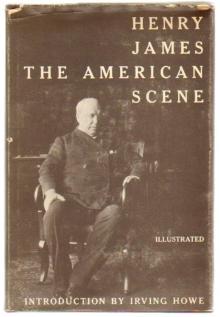 The American
The American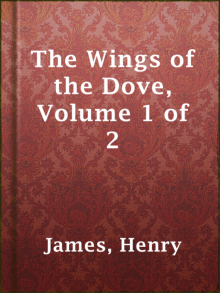 The Wings of the Dove, Volume 1 of 2
The Wings of the Dove, Volume 1 of 2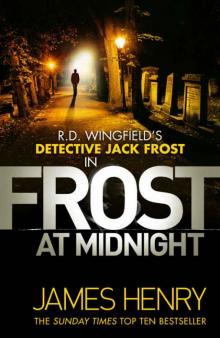 Frost at Midnight
Frost at Midnight Morning Frost
Morning Frost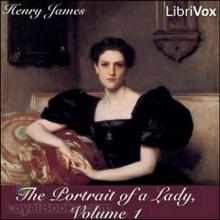 The Portrait of a Lady — Volume 1
The Portrait of a Lady — Volume 1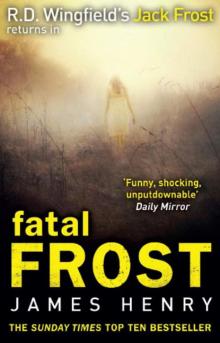 Fatal Frost
Fatal Frost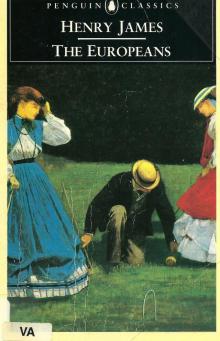 The Europeans
The Europeans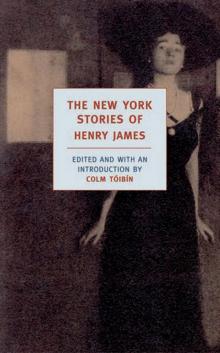 The New York Stories of Henry James
The New York Stories of Henry James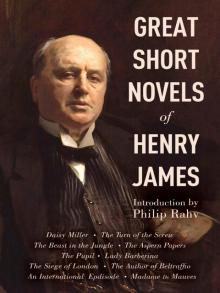 Great Short Novels of Henry James
Great Short Novels of Henry James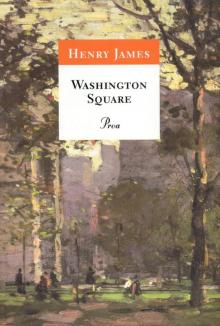 Washington Square
Washington Square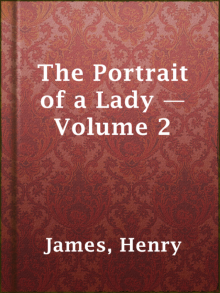 The Portrait of a Lady — Volume 2
The Portrait of a Lady — Volume 2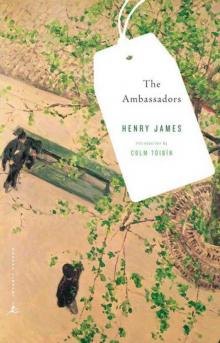 The Ambassadors
The Ambassadors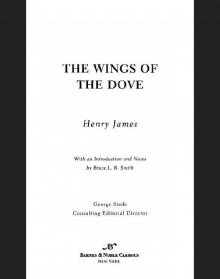 The Wings of the Dove
The Wings of the Dove The Princess Casamassima (Classics)
The Princess Casamassima (Classics)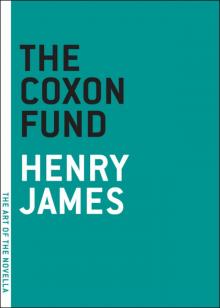 The Coxon Fund
The Coxon Fund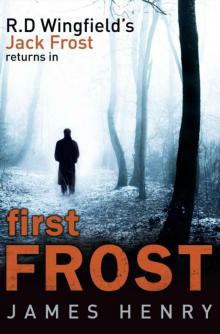 First Frost
First Frost Henry James
Henry James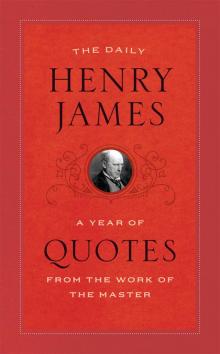 The Daily Henry James
The Daily Henry James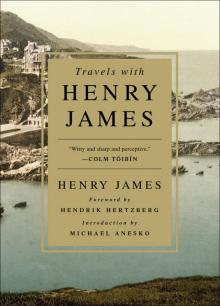 Travels With Henry James
Travels With Henry James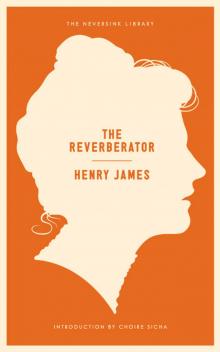 The Reverberator: A Novel
The Reverberator: A Novel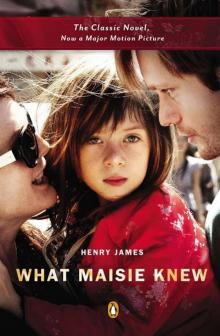 What Maisie Knew (Henry James Collection)
What Maisie Knew (Henry James Collection)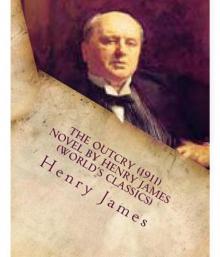 The Outcry
The Outcry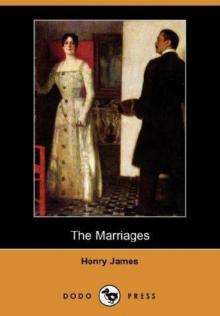 The Marriages
The Marriages The Wings of the Dove, Volume 2
The Wings of the Dove, Volume 2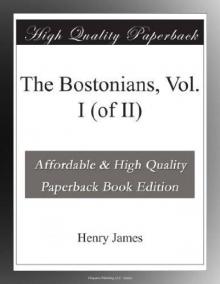 The Bostonians, Vol. I
The Bostonians, Vol. I The Outcry: -1911
The Outcry: -1911 The Complete Works of Henry James
The Complete Works of Henry James Letters from the Palazzo Barbaro
Letters from the Palazzo Barbaro The Pupil
The Pupil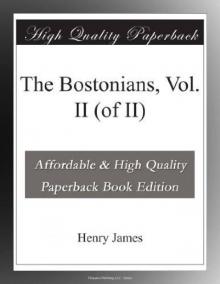 The Bostonians, Vol. II
The Bostonians, Vol. II Pandora
Pandora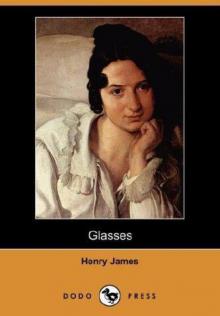 Glasses
Glasses The Princess Casamassima
The Princess Casamassima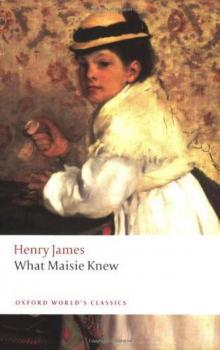 What Maisie Knew
What Maisie Knew The Reverberator
The Reverberator The Golden Bowl - Complete
The Golden Bowl - Complete Confidence
Confidence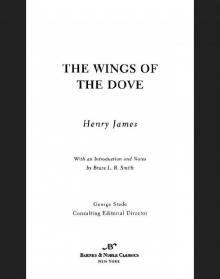 Wings of the Dove (Barnes & Noble Classics Series)
Wings of the Dove (Barnes & Noble Classics Series)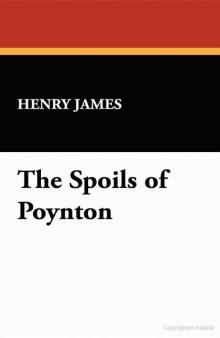 The Spoils of Poynton
The Spoils of Poynton